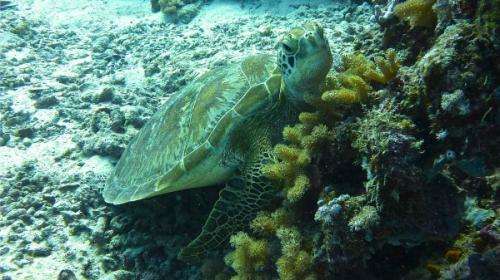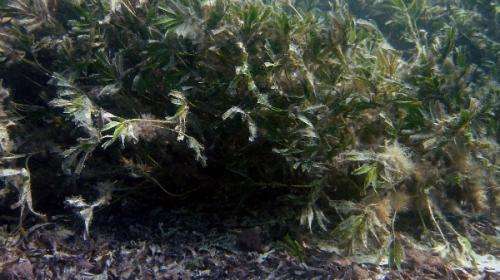Camera-carrying turtles reveal seagrass decline

Sea turtles fitted with video cameras have revealed a decline in seagrass health in Shark Bay following a catastrophic marine heat wave in 2011.
Animal-borne videos have previously been used to study animal behaviour, but this is believed to have been the first use of such videos to assess ecosystem health.
Florida International University post-doctoral researcher Jordan Thomson says the footage, combined with traditional standardised seagrass surveys, reveals that the heat wave caused more than 90 per cent dieback of the dominant seagrass, Amphibolis antarctica, in several regions of Shark Bay.
"Turtle-borne video footage provides unique insights into the health of seagrass meadows from the perspective of resident wildlife that depend on these habitats," Dr Thomson says.
Dr Thomson's team compared the video footage, captured in 2011–12, with similar footage taken in the early 2000s.
"In the older footage, from 2000 to 2003, turtles spent 97 per cent of their time swimming over lush, dense seagrass.
"In comparison, after the heat wave, turtles almost exclusively encountered sparse, defoliated or dead seagrass that was overgrown by algae."
Dr Thomson says the findings are alarming because of the important role of seagrass in the ecosystem.
"Seagrasses are marine foundation species that support diverse food webs and provide valuable ecosystem services," he says.

Dr Thomson's study has also revealed the seagrass die-off has negatively affected the health of green turtles (Chelonia mydas), which rely on seagrasses for food and feeding habitat.
The researchers assessed the health of 424 green turtles in Shark Bay between 2000 and 2013, finding the turtles were more likely to fall in a lower health status category after the heat wave than before.
What's more, turtle health status declined consistently from 2011, the year of the heat wave, to 2013.
Dr Thomson says Shark Bay was one of the worst affected areas during the heatwave, with average water temperatures in the region spiking by up to four degrees Celsius in February 2011.
The heat wave was caused by a combination of factors including strong flow of the Leeuwin Current, which brings warm tropical water south along the WA coast, and near-record La Niña conditions.
This event is concerning because, with ocean temperatures in this part of the Indian Ocean gradually increasing, marine heat waves may become more frequent and intense, causing even more pronounced impacts on coastal ecosystems.
Provided by Science Network WA


















